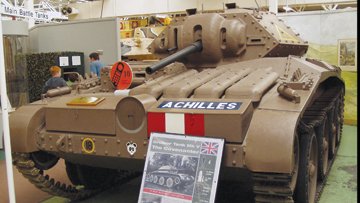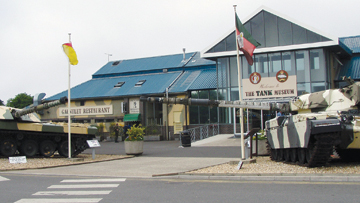You have free articles remaining this month.
Subscribe to the RP Witness for full access to new articles and the complete archives.
Sam Boyle, the late, great RP missionary to China and Japan, told me a story about a visitor to the Midwest. The visitor asked his host about the churches he spotted as they drove through a small town.
“What’s that one there?” he asked.
“Oh, that’s the ‘Holy Rollers’—they’re into foot-washing.”
“And that church over there?”
“They’re the Mennonites—they are pacifists.”
“And what’s that little church across the way?”
“That,” said his host, “is the Covenanter Church—they fight and they don’t wash their feet!”
Behind the humor is a solemn truth. The Reformed Presbyterian (a.k.a. Covenanter) Church was born in blood from the Scottish wars of three and a half centuries ago and is heir to the long—and thoroughly biblical—tradition of contending for the faith once delivered to the saints (Jude 3).
World War II
Growing up in Scotland in the 1940s and ’50s, my brother and I lived in the shadow of what we still call “the last war.” Our play was dominated by “British and Jerries” war games. We roamed all over the neighborhood, firing our cap-guns, “killing” each other repeatedly, and winning the war over and over again. The Jerries always lost. I don’t ever remember the slightest mention of the Americans. We British won the war—the Yanks helped out a bit, sure, but you know!
We also knew what Dad did in the war. He was a gunner in the Royal Horse Artillery in the famous “Desert Rats” (4th Light Armoured) Brigade and had seen action in North Africa, 1942-’43, from the Battle of El Alamein in Egypt, to the German surrender in Tunisia, and then, in Europe, from D+2 (June 8, 1944) at the Normandy landings to the final surrender on May 8, 1945.
“What did you do in the war?” my younger brother once asked our mother, suspecting that her war effort was a little less spectacular than Dad’s. Quick as a flash, Mum replied, “I had your older brother—that’s what I did in the war!” (Actually, before she had me, she worked in a factory that fabricated wings for Spitfire fighter planes.) But we were incurable, little militarists with an abiding interest in warfare and its accoutrements—except, needless to say, the blood and pain and misery of it all.
The Scottish Covenanters
We also learned about the 17th-Century Scottish Covenanters from our earliest days. I was born in Edinburgh—a hop, skip and a jump from Greyfriars Kirk, where the National Covenant was signed in 1638. I went to high school on the other side of the wall of the Covenanter Prison, where the poor captives from the Battle of Bothwell Bridge (1685) were held in the open under winter skies. If I had a penny for ever ytime I walked through the Grassmarket (just behind the school), where so many were martyred for their commitment to Christ’s crown and covenant, I might be living off the interest to this day!
In Scotland, then and now, the Covenanters were seen as heroic defenders of spiritual and political liberties against the absolutism of the Stuart Kings and their Episcopalian churchmen. The theme of political freedom is what now dominates the treatment of their role in Scottish history in the public schools, but they have always been held in honor as signal contributors to all the freedoms Scots now enjoy.
Of course, I didn’t know then that the church of these Covenanters—the Reformed Presbyterian Church—lived on in the modern world, and that I would one day be able to look back on more than 30 years of ministry in the North American branch of the very same movement. God moves in mysterious ways indeed!
The Covenanter Tank
Fast forward 50 years, and these two threads come together in a curious way. In the summer of 2004, my wife, Jane, and I vacationed in the south of England. For decades, I had wanted to visit the world-famous Tank Museum in Bovington, near the English Channel coast. Now I was within striking distance! As a peace-loving American, Jane was happy to forego the tanks and do other (better) things, so I got to take off for the day and indulge the teenager within.
I drove south through picture- postcard villages with thatched cottages, past the house called “Cloud Hill,” where Lawrence of Arabia spent his last years, and rolled into Bovington along with busloads of typical tank afi cionados, i.e., real teenagers, and all males! What a place! And what an amazing collection! All these grim engines of death under one roof. From World War I to the Gulf War, they are all there—300 tanks from 26 countries. Trophies from past wars, like a German Tiger and an Iraqi T-72. And in the middle of them was a fully restored “Covenanter” tank from World War II.
Until 1940, British tanks were either designated “I” or “C.” The former were heavily armored and trundled along with the infantry, while the latter were fast (30 mph) and were supposed to cruise through the gaps in the enemy lines made by the others, and deliver the decisive blow. All cruiser tanks started with numbers (A9, A10, etc), but ended up with much more warlike names beginning with a “C.” The “Covenanter” was the fi rst of these. I suppose its original designation, “Cruiser Mark V, A13 Mk. III,” just didn’t inspire. This pattern continues to this day, through such names as Crusader, Churchill, Cavalier, Centaur, Cromwell, Comet, Centurion, Conqueror, and Chieftain, to the current British MBT, the Challenger II.
About 1,771 Covenanter tanks were built between 1940 and 1943. All but 76 were gun tanks. The others were bridge- layers, with a 30-foot folding bridge in place of the turret. The last survivor of these is in the Australian Army Tank Museum at Puckapunyal, Victoria.
Although they equipped three British armored divisions (Guards, 9th, and 42nd) and the Polish Armored Division, the Covenanter tanks had technical problems that led them to be used for training rather than combat. Units were re-equipped for overseas service. Only one was ever lost to enemy action, and that was because it was on a train hit by a German bomb!
Although hardly a war-winner, the Covenanter did play an important role in the British war effort. Had the Germans invaded England as they planned, about a quarter of the U.K. home tank strength opposing them would have been Covenanters.
The Covenanter tank was all but forgotten by the war’s end. The beautifully restored example at Bovington only survives because it was buried in a field—why buried, nobody knows. A farmer unearthed it years later. The choice of the name is also a mystery. The Tank Museum can’t understand why it was given a name that hardly anybody in England would recognize. The answer to that may be that it was the London, Midland, and Scottish Railway Company workshops that designed and built the Covenanter. Was there, somewhere in the equation, a Scotsman with a sense of history and perhaps also a sense of the need for dependence upon the Lord for the winning of the war?
Gordon Keddie is pastor of Southside Indianapolis, Ind., RPC and is the author of numerous books.

